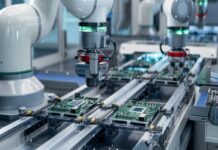
Researchers at UMC Utrecht and Utrecht University, supported by the European Research Council (ERC), have developed an artificial intelligence-based 3D bioprinting system that could advance the engineering of implantable tissues.
The work, published in Nature, details a new technology called GRACE, short for Generative, Adaptive, Context-Aware 3D printing.
According to the ERC, the system integrates computer vision and laser-based imaging with volumetric bioprinting, giving printers the ability to observe and adapt designs while printing.
The Council said the innovation could help overcome one of the main barriers in bioprinting – ensuring both the survival and functionality of living cells in printed structures.
Traditional 3D bioprinting is carried out layer by layer, a process that can damage fragile cells. Volumetric bioprinting, a newer approach, uses light-sensitive gels that solidify when exposed to cell-friendly laser light, producing entire structures in seconds.
The ERC noted that GRACE builds on this method by enabling the printer to detect where cells are located in the gel and automatically adjust the design in real time.
One of the areas where this system could be applied is the creation of blood vessels. “In the past, printing always depended on the designer’s blueprint. Now, GRACE contributes to the design itself,” said Sammy Florczak, a PhD student involved in the development.
ERC noted that by scanning cell positions, the system can generate vascular networks that better support tissue survival, addressing a longstanding challenge in bioprinting.
The ERC added that GRACE also improves the alignment of multiple printing steps, such as combining printed bone tissue with cartilage layers, and can correct for optical distortions that occur during the process.
This adaptability, the Council said, allows for more consistent results and opens opportunities for incorporating pre-made objects into bioprinted structures.
Lead investigator Riccardo Levato said that while the results mark an important step, further research is required before the technology can be applied in clinical settings.
“This first work on GRACE is just the beginning. We are now working on increasing the amount of cells that can be printed, so that other tissues like heart and liver can also be printed,” he said.
The European Research Council underscored that the technology is still in development but has the potential to support future applications in repairing tissues, testing new medicines, and eventually replacing damaged organs.
The ERC also noted that the team intends to make the technique accessible to other laboratories to accelerate progress in the field.



















